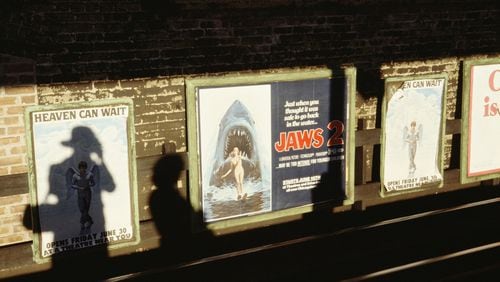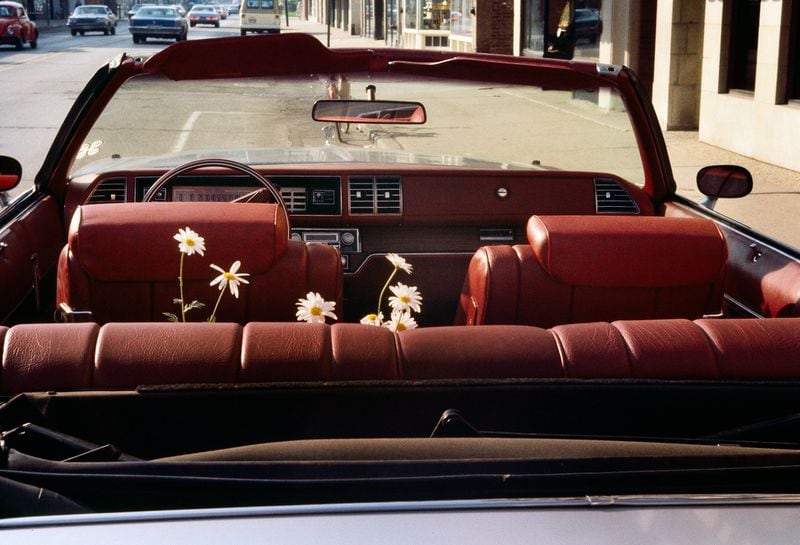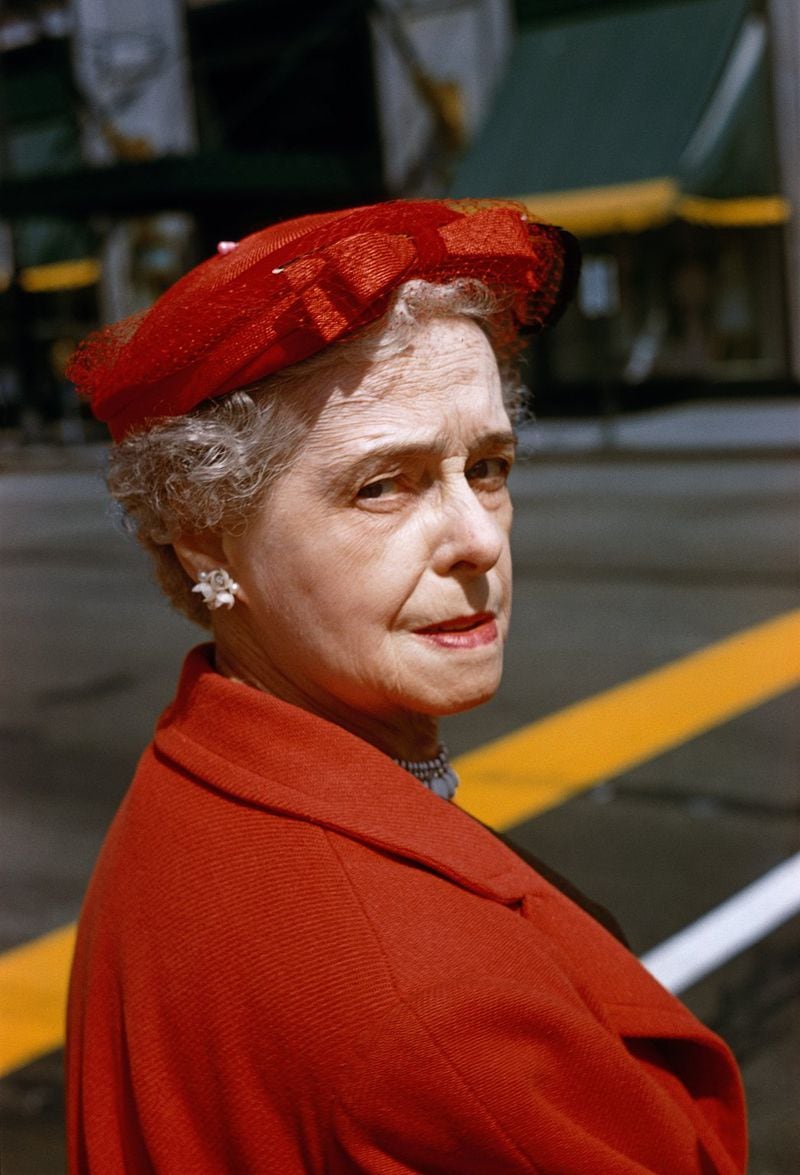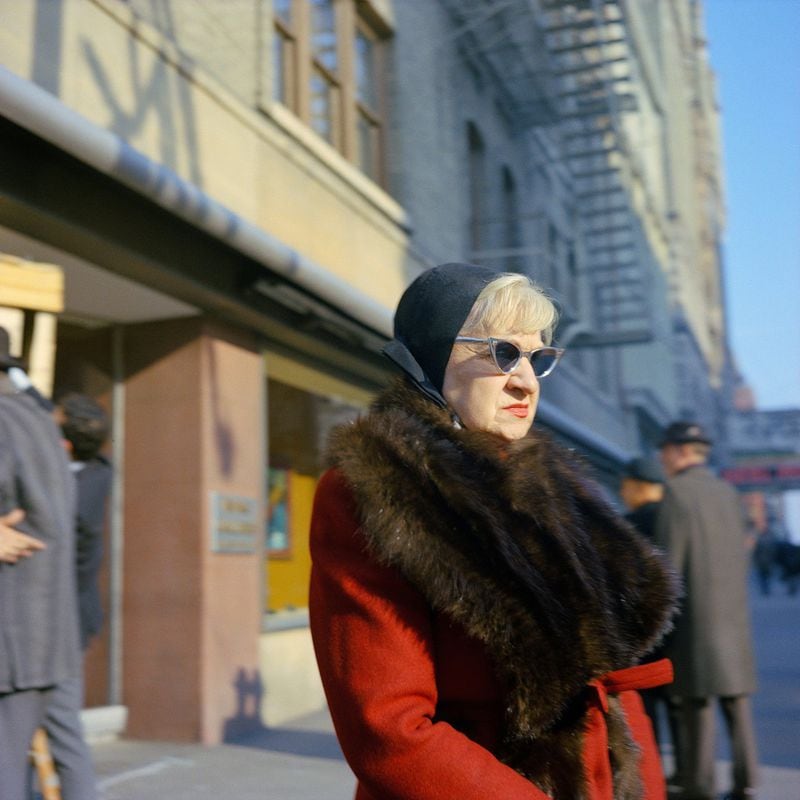Vivian Maier is one of the most fascinating enigmas in the photography world. She worked her whole life as a Chicago nanny but pursued an obsessive avocation on the side. Beginning in the 1950s, she took thousands of photographs, of Chicago’s streetscape and locations around the world, often capturing elderly women, little children and the random eccentricities that define city life with her medium-format Rolleiflex.
Only after her death in 2009 at the age of 83 was her remarkable output “discovered” in two storage lockers whose contents were auctioned off to the highest bidder, thus securing her posthumous legacy.
You can get the Cliffs Notes on Maier by watching the compelling 2013 documentary “Finding Vivian Maier,” but you’d be well advised to also motor down to Lumiere Gallery in Peachtree Hills and see a witty, deliciously vibrant side of Maier in “Vivian Maier: The Color Work,” featuring 31 works by this fascinating photographer. Many have held up Maier’s humorous, incisive output as equal to street photography greats like Robert Frank, Helen Levitt and Lisette Model, and something about color certainly brings out Maier’s occasionally loopy, at times poignant, utterly idiosyncratic vision. Her attraction to the color red is especially thrilling; there is an electric, eyeball-frying intensity to the balloons and sweaters and coats that she waves before our eyes like a matador drawing us in.
In this selection of “Color Work,” Maier shows a special love of gussied-up older dames decked out for the business of life. These are women who might be invisible to the rest of the world but who are peacock vivid in Maier’s frame, with their coral lipstick, chrysanthemum-festooned hats, dazzling cut-glass brooches and fierce middle-aged glory.
Street photographers can often treat human beings as a curiosity; exhibit A in the natural history museum of life. But there is tenderness in Maier’s vision. She was a classic street photographer, arresting unexpected, fleeting moments, but not at the expense of her subjects. Representative of that approach is a 1971 photograph of an older woman with a sweater secured by a single button over her shoulders and a pin-neat hairstyle, her brow furrowed in the act of counting the change she cradles in her palm. There is something in her fastidious dress, her deeply human look of concentration and perhaps, in her fussing about having enough money that puts a lump in your throat. What is this lady’s reality? you wonder. What is her life like beyond the margins of this single image? Maier made you ask. Maier made you care.
One image in particular in the Lumiere exhibition sticks out, of an elderly couple with intertwined arms. It’s a tender, sensitive shot that Maier makes more so by cropping out the couple’s faces to maintain their privacy and cement the universality of that gentle, loving embrace.
Maier’s particular sense of humor, often reminiscent of Elliott Erwitt, can be seen in a number of “self-portraits” featured here where she focuses on her own fleeting reflection in a shop window or the shadow cast as she stands on a Chicago sidewalk. In those canny works, she acknowledges the talented photographer’s ability to blend into the woodwork. But perhaps she’s also referencing her own social invisibility as a nondescript, middle-aged woman whose career as a nanny reduced her to a kind of marginal role.
Maier was not unlike the other invisible people she captured — small children, older women, newsstand clerks, sidewalk salesmen and African-Americans. It’s tempting to see Maier’s vantage as decidedly female because, like many of her subjects, she did not command full power and control, but used that status to her advantage as an observer. Like so many incredible novelists, filmmakers and artists who were outsiders themselves, she allowed us to see the world more clearly.
ART REVIEW
“Vivian Maier: The Color Work”
Through March 22. By appointment, Mondays-Fridays. Free. Lumiere Gallery, The Galleries of Peachtree Hills, 425 Peachtree Hills Avenue, Building 5, Suite 29B, Atlanta. 404-261-6100, lumieregallery.net.
Bottom line: Sizzling color and a unique eye make this work from self-taught photographer Vivian Maier an incomparable delight.
IN OTHER NEWS:
About the Author









